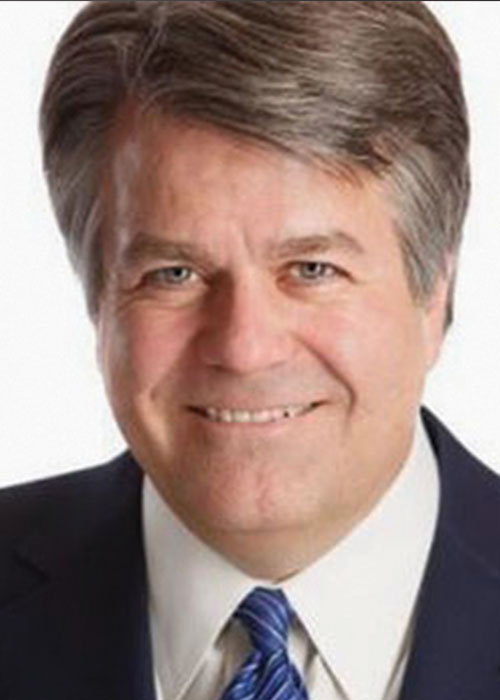Integrating Technologies, Security and Privacy: Hospital Security Systems Must Do More Than Lock Doors and Record Video


Health care facilities are faced with a considerable number of challenges. The responsibility to balance security with a welcoming and therapeutic environment demands a unique approach that involves security leaders, the IT department and the C-suite.
Paramount to this idea is executing a multilayered strategy that includes creative security solutions, staff safety training and the capacity to gain comprehensive situational awareness of the facility.
It is also essential that the systems that keep a health care facility safe and functional integrate into a comprehensive streamlined infrastructure.
3 Major Security Challenges in Health Care
Hospitals around the globe face the challenge of meeting the needs of a wide variety of people, from protecting patients (and their confidential information) to ensuring the well-being of staff and physicians to providing a safe environment for visitors. The sheer number of people entering and exiting health care facilities makes securing them difficult, and a perceived lack of security can be detrimental and set a negative tone for a patient’s visit. Unfortunately, the challenges do not end here.
Protecting Patients and Privacy
Strict privacy laws and regulations, such as the Health Insurance Portability and Accountability Act (HIPAA), are important considerations when deploying and financing security solutions in the health care sector. Health care providers must balance the demand for privacy with ensuring high levels of security. Network safety threats disproportionately affect health care institutions and patient data, so a focus on boosting cybersecurity is vital. Additionally, robust security solutions that combine access control and video surveillance are critical, as these systems are valuable in streamlining the investigation process.
Compliance With Regulations and Standards
Physical security systems must account for the need to protect patient confidentiality at every turn. Role-based access control that ensures the right people have access to controlled areas, patient files and data goes a long way toward achieving this. Additionally, having a system that allows security officials to manage access and rules quickly and efficiently through an easy-to-use interface is key to ensuring that proper procedures are followed.
Database Maintenance
Enterprise facilities with multiple sites and sometimes thousands of employees entering and exiting during the day can be cumbersome to manage, especially when dealing with data input and output that grants and restricts access. Human resources and security leaders must work together to ensure that the right people are granted the proper access levels. Otherwise, the health care facility might open itself up to liability.
7 Health Care Security Essentials
Various systems and solutions can be implemented to mitigate risk and manage some of the challenges that health care facilities face. Numerous sectors of a hospital have complex needs for role-based access control. For instance, ease of access to managed entrances is critical to medical crash units, and the ability to implement a zonal access control lockdown could be life-saving during an infectious disease outbreak. Susceptible areas such as blood banks and pharmaceutical storage also require controlled access.
Hospitals need a system that will permit them to carry out access rules while dealing with immense volumes of traffic. A conventional key-based system is not designed to keep up with the demands of such a dynamic atmosphere. This is where cloud-based access control and open API architecture come in. A modern security management system can integrate a facility’s digital video, alarm management, and access control technologies into a single, streamlined solution. The benefits to this approach include scalability, flexibility and the ability to serve multiple sites. This flexibility can demonstrate itself in various ways. For example, if a staff member is let go, access can be automatically revoked when an HR manager updates the individual’s employment status from “active” to “inactive.”
Managing Data
Hospitals can have hundreds, if not thousands, of employees who need varying levels of access based on their positions. Custom, configurable data management systems that integrate with human resources, personnel management and IT can help streamline and automate business workflows between systems. Not only does this assist security administrators in ensuring that the correct people have the correct access, but it also decreases systems administrators’ workloads by eliminating data entry errors that could result in threats to patients, staff and visitors.
The demand for integration will continue to propel innovation in access control, not only for security systems, but also for human resources, software tools, and event management programs. Active facilities and aligned stakeholders demand the capability to grant automatic permissions in order to save time and energy on manual input and make changing authorizations efficient and straightforward.
Mobility
Having a mobile application to grant access, freeze access, or change permissions instantaneously is essential in health care. Security teams need to stay on the move throughout a facility, and mobile applications allow them to control systems remotely.
Lockdown Functionality
An essential feature within today’s health care market is lockdown capability. Manufacturers are being driven to provide solutions that make it effortless for security directors to manage access quickly and efficiently in an emergency. The ability to lock down portions of a hospital or even an entire facility is critical to ensuring the continuity of operations.
One area where this is particularly vital is in nursing homes, which need to be able to lock down a facility to prevent patients from leaving while maintaining a welcoming environment. Access control systems can enable caregivers to allow visitors in and out with the press of a button, while keeping the doors tightly managed to prevent patient elopement.
Video Surveillance and Access Control Integration
The integration of access control and video surveillance plays a crucial role in the ability of administrators to make swift, impactful decisions during an emergency.
Choosing an access control system that is flexible and has an open API architecture allows for greater integration. The combination of video and access control expands situational awareness, allowing security personnel to better assess potential threats. For example, access control systems can generate alerts, such as an invalid badge being scanned or a door being forced open. Coupling such alerts with video allows the operator to make decisions based on what is occurring even before security arrives on scene, thus enabling a quick and decisive response.
Restricted Access and Pharmaceutical Protection
Sensitive materials, such as narcotics, need added security, along with stringent access restrictions based on differing roles. It is critical to protect controlled substances, as well as medical files, with electronic access-controlled cabinet locks to provide administrators with audit trails in case of a breach.
Protecting Patient Privacy
In the United States, HIPAA sets national standards to secure the confidentiality and integrity of protected health information that an entity creates, receives, maintains or transmits. Internationally, similar privacy rules exist, including the European Union’s General Data Protection Regulation (GDPR) and Canada’s Personal Information Protection and Electronic Documents Act (PIPEDA).
In some facilities, iris or fingerprint scanners are used to safeguard essential data from would-be bad actors. This way, only authorized users have access to the information. Furthermore, IT departments are working closely with security leaders to guarantee that networks and access points are as secure as possible to protect against ransomware threats. Video masking, which refers to hiding or anonymizing a portion of a video feed (that is, blurring it), allows health care facilities to record video in sensitive areas while protecting an individual’s identity. This lets security officials gather critical video data while also respecting the right to privacy.
Multi-Layer Techniques
Administrators can achieve higher levels of security and interoperability by integrating systems through a centralized platform, like a security management system. Taking different technologies, such as access control, intrusion, video, alarms, infant protection systems and emergency towers, and integrating them to formulate a single operational system is a highly effective way to protect a facility. Bringing all of these solutions together should be a primary goal when designing security infrastructure.
David Sullivan (kayla@compassintegrated.com) is the president of ACRE Americas (acre-co.com).
